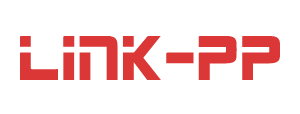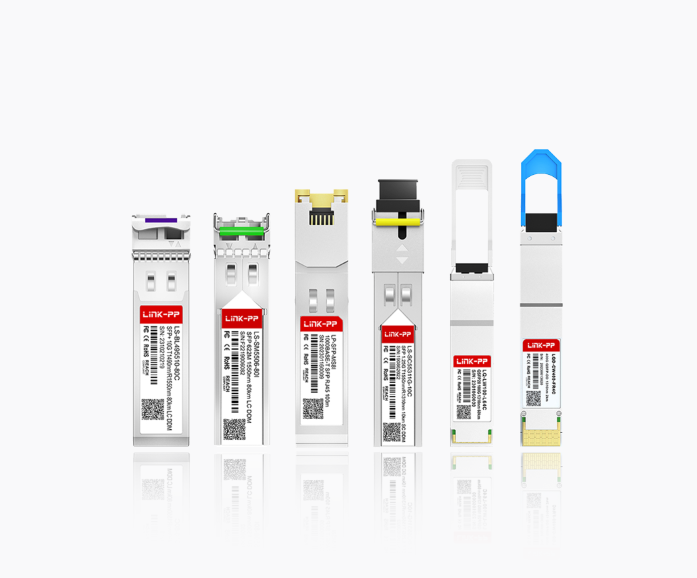
In the relentless pursuit of higher bandwidth and greater efficiency within optical networks, DWDM tunable transceivers have emerged as a game-changing technology. Replacing fixed-wavelength DWDM optics, these intelligent components offer unprecedented flexibility, simplify operations, and reduce costs. Understanding their function and benefits is crucial for network engineers and planners looking to optimize their infrastructure. LINK-PP, a leader in high-performance optical transceiver solutions, is at the forefront of delivering reliable tunable technology.
Understanding DWDM Tunable Transceivers
What Are DWDM Tunable Optical Modules?
DWDM tunable optical modules are advanced devices used in dense wavelength division multiplexing systems. These modules allow you to dynamically adjust the wavelength of light signals transmitted over fiber optic cables. Unlike fixed-wavelength modules, tunable DWDM modules provide greater flexibility and efficiency in managing optical networks. They are essential for modern communication systems, enabling high-speed data transmission across long distances.
How Do Tunable DWDM Transceivers Work?
The core technology involves precisely adjusting the wavelength emitted by the transceiver's laser. Common methods include:
Thermal Tuning: Altering the laser's temperature changes its refractive index and cavity length, shifting the output wavelength. Reliable and widely used.
MEMS (Micro-Electro-Mechanical Systems): Tiny mechanical mirrors or gratings are adjusted to select the desired wavelength. Offers fast tuning speeds.
Distributed Feedback (DFB) Array: Utilizes multiple DFB lasers on a single chip, switching between them electronically. Known for high stability.
Modern tunable SFP+, tunable QSFP+, tunable SFP28, and tunable QSFP28 modules combine one of these tuning mechanisms with sophisticated control electronics. They communicate wavelength information via the standard Digital Diagnostics Monitoring (DDM/DOM) interface (I2C) and respond to wavelength setting commands from the host system or management software.
Why Choose Tunable DWDM Transceivers? The Compelling Advantages
Replacing fixed-wavelength modules with tunable ones delivers significant operational and financial benefits:
Massive Inventory Reduction & Cost Savings: Eliminate the need to stock dozens of unique fixed-wavelength modules for every possible channel and direction. One or a few tunable optical transceivers can cover your entire DWDM spectrum. This drastically reduces CAPEX (fewer SKUs to buy upfront) and OPEX (lower storage costs, simplified logistics).
Unparalleled Flexibility & Agility: Need to provision a new service, reroute traffic, or replace a failed module? A tunable module can be configured on-demand for the required wavelength in minutes, speeding up deployment and troubleshooting. Ideal for dynamic optical network environments.
Simplified Spares Management: Your sparing strategy becomes incredibly simple. A small number of identical tunable modules serve as universal spares for any DWDM port, simplifying logistics and reducing the risk of stocking the wrong part. This is a key advantage for network operators managing large infrastructures.
Smooth Migration & Future-Proofing: Upgrading from 10G to 100G, 400G, or beyond? Tunable modules often support multiple data rates and modulation formats. They also adapt easily to changing channel plans or grid spacing (e.g., moving to flexi-grid), protecting your investment.
Optimized Network Design: Enables efficient wavelength provisioning and more dynamic optical network architectures like ROADM (Reconfigurable Optical Add-Drop Multiplexer)-based networks, where wavelengths need to be assigned and changed remotely across nodes.
Fixed vs. Tunable DWDM: A Clear Comparison
Feature | Fixed Wavelength DWDM Transceiver | Tunable DWDM Transceiver |
|---|---|---|
Wavelength | Single, Pre-defined (e.g., Ch 31) | Adjustable across a range (e.g., Full C-band) |
Spare Inventory | High (Spares needed per wavelength) | Very Low (One type covers all) |
Provisioning Speed | Slow (Manual swap required) | Fast (Software-configurable) |
Flexibility | Low | Very High |
ROADM Compatibility | Limited | Essential / Optimal |
Initial Cost (per unit) | Lower | Higher |
Total Cost of Ownership (TCO) | Higher (Inventory, OpEx) | Lower (Reduced Inventory & OpEx) |
Use Case | Simple point-to-point links, very stable configs | Complex networks, ROADMs, dynamic needs, future-proofing |
Applications of Tunable DWDM Modules
Data Center Interconnect (DCI): Where rapid provisioning, scalability, and cost-effective high-capacity links between data centers are critical. LINK-PP's high-performance tunable SFP+ and tunable QSFP28 modules are DCI workhorses.
Telecom Metro & Core Networks: Enabling flexible service delivery, efficient bandwidth management, and seamless upgrades in carrier networks. Tunable DWDM transceivers are essential for modern ROADM-based architectures.
5G Mobile Fronthaul/Midhaul/Backhaul: Demanding flexible, high-capacity, and low-latency transport for emerging 5G infrastructure.
Enterprise WAN/Campus Networks: For organizations requiring scalable, future-proof connections between large sites.
Disaster Recovery & Network Restoration: Tunables act as universal spares, drastically speeding up recovery times.
Choosing the Right Tunable DWDM Transceiver: Key Specifications
Selecting a high performance DWDM tunable transceiver requires careful consideration. LINK-PP transceivers are engineered to meet demanding specifications:
Specification | Importance | Typical Range/Value |
|---|---|---|
Tuning Range | Determines the number of ITU channels supported. Full C-band is ideal. | C-band (1528.77nm - 1563.86nm) |
Channel Spacing | Must match network grid (100GHz, 50GHz, etc.). 50GHz is common. | 50GHz (Supports 96 channels @ 0.8nm spacing) |
Form Factor | Must match switch/router port (SFP+, SFP28, QSFP28,) | SFP+, SFP28, QSFP28, |
Data Rate | Interface speed (10G, 25G, 100G) | 10G, 25G, 100G |
Reach | Distance over fiber (SR, LR, ER, ZR). Match to link distance. | 40km (ER), 80km (ZR) common |
Power Consumption | Impacts operating costs and thermal design. Lower is better. | < 3.5W (Typical for 10G/25G tunable SFP+/SFP28) |
Tuning Time | Speed to switch wavelengths. Crucial for dynamic networks. | < 30 seconds (Typical, some faster) |
Compliance | Must meet standards (ITU-T G.694.1, MSA SFF-8472, IEEE 802.3, etc.) | Full MSA & ITU-T compliant |
Diagnostics (DDM/DOM) | Essential for monitoring health, temperature, voltage, Tx/Rx power. | Full DDM support |
Operating Temp | Must function reliably in intended environment (Commercial, Industrial). | 0°C to 70°C (Com), -40°C to 85°C (Ind) |
LINK-PP: Your Partner for Advanced Tunable Optical Solutions

At LINK-PP, we understand the critical role high-performance optical transceivers play in modern networks. Our portfolio of DWDM tunable optical modules is engineered for reliability, performance, and seamless integration. We offer a wide range of form factors and data rates, featuring:
Industry-Leading Tuning Range & Accuracy: Precise channel locking across the full C-band.
Low Power Consumption: Optimized for energy efficiency.
Comprehensive Diagnostics: Real-time monitoring for proactive network management.
Rigorous Testing & MSA Compliance: Guaranteed interoperability.
Superior Technical Support: Expert assistance for design-in and deployment.
Ready to Simplify Your Network & Unleash Flexibility?
Stop managing the complexity and cost of fixed-wavelength DWDM transceiver inventories. Embrace the future of agile optical networking with cutting-edge DWDM tunable optical modules.
Explore our full range of high-performance tunable DWDM solutions from LINK-PP!
☛ product portfolio
☛ technical support
See Also
Exploring WDM Technology and Its Role in Optical Networks
The Importance of DDM/DOM in Optical Transceiver Monitoring




